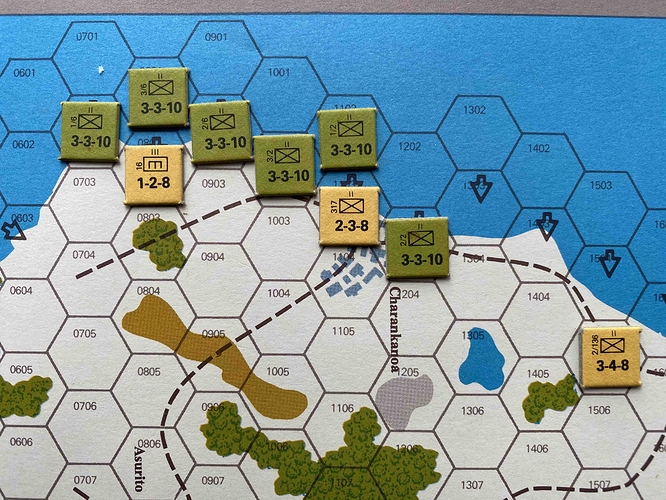I’ve worked, at a low-ish level (scenario design, writing some background stuff, that sort of thing) with some of the folks who made JTS games in the past. I think I did a scenario in Sicily '43 and a fiction piece for Korea '85, IIRC. Maybe some others stuff, can’t recall. And I was in relatively frequent contact back in the day with John Tiller and Glenn Saunders at least, who were key players. The people who do the research and scenario work for these games are dedicated, and usually very skilled. And Tiller himself is very talented, with a Ph.D. in Mathematics. The issue I have, and others have as well, is the stasis into which all of these games seem to have fallen. Once there was a working base system, there have been only incremental changes over by now several decades. There are different system sets–one for air games, one for naval games, a strategic one, for instance, in addition to the base “Campaigns” engine–but for most of the games there’s just various iterations of that one base system.
And that system is, as noted, long in the tooth. Its primary benefit from the beginning was its ability to simulate, on a computer, the look and feel of those SPI company/battalion-level monster games like Wacht am Rhein, Atlantic Wal, and Highway to the Reich, with their huge maps and gazillion counters. That, and it was built from the beginning to allow designers (and gamers) to use the same base engine with different terrain and unit sets to cover a vast array of WWII and post-war conventional battles, real or hypothetical. Tiller would work with designers to add in additional features needed for specific things, like helicopters in the Modern Campaigns games.
As time went on, though, for a variety of reasons, it became clear that no substantial revision or updating of the core game engine was going to happen. It worked well enough, the feeling seemed to be, and designers were doing good work figuring out how to add at least the semblance of unique features they wanted. But there was simply no profit to be had in doing things like migrating away from Windows XP-era tech, taking advantage of modern GPUs and other hardware, or, most importantly, revising core systems like the AI and UI/UX.
Which is a shame, because I love looking at these games, especially with the modded or otherwise upgraded art work that the community has done. And I love the sheer breadth of the battles they cover. I am a big fan of games where you push around battalions on maps at the one mile or so to a hex scale. But these games are tedious. It’s not even the AI’s ability or lack thereof that is the issue. Even playing solitaire it takes forever to do turns, and against the AI waiting for all the defensive fire and stuff is excruciating. The core systems are archaic and plodding. The central problem for me at least is the lack of dynamism in the games. So many of them feature long front lines of stacked units lined up in huge blocks, and because of the time scale, these blocks seem to inch across the map at glacial speeds. With a day of fighting often broken down into four, five, or more turns, and a lot of slow moving units and often rough or roadless terrain, the front lines take forever to shift.
You don’t get the feeling of commanding a Blitzkrieg, but rather the cold joy of doing the bookkeeping for the army HQ. Combat is lifeless, with results that offer little drama and less sense of being able to influence the outcome. It has the opposite problem that Grigsby and Koger have. In those games, things are bottom-up, and you count rifles and lose X number of jeeps, stuff like that. Silliness. Here, it’s the other extreme. Your units have values, yes, but they don’t really tell you much, and it’s difficult to tell the wheat from the chaff all too often. Combat results are muddled and units will often either endure superhuman levels of abuse without retreating or dying, or they will scurry away at the slightest hint of an attack. And usually, it’s hard to predict which.
There are so many units, and so much surface detail, in these games, that they are a hoot to peruse and to set up and fiddle with for a bit, but actually playing anything other than a small scenario becomes more a test of your endurance than of your acumen. And playing by email? Be prepared to fight a campaign that in real life took a month over the course of, oh, three or four times that many months.
Don’t get me wrong; I have the utmost respect for everyone at JTS, and the folks at the WDS with the Panzer Battles games are making some great progress in revitalizing much of the system, albeit in very specific and limited ways. And the research, OOB, and background work that goes into each game is laudable, and impressive. But nothing can mitigate the fact that it all ends up being crippled by a game engine and simulation structure that is not only last century, but which saps the life out of even the most interesting campaigns.


